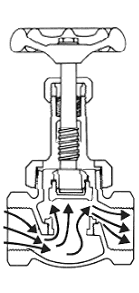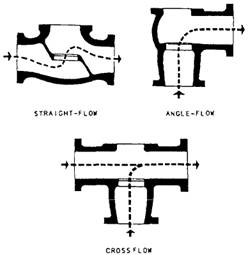Globe Valves

Shorter disk travel - with fewer turns required to operate globe valves saves considerable time and work, also wear on valve parts.
Globe valve inlet and outlet openings are arranged in several ways:

Recommended Uses:
1. Throttling service/flow regulation
2. Frequent operation
Applications: Liquids, vapors, gases, corrosive substances, slurries
Advantages: Disadvantages:
1. Efficient throttling 1. High pressure drop
2. Accurate flow control 2. More expensive than other valves
3. Available in multiple ports




